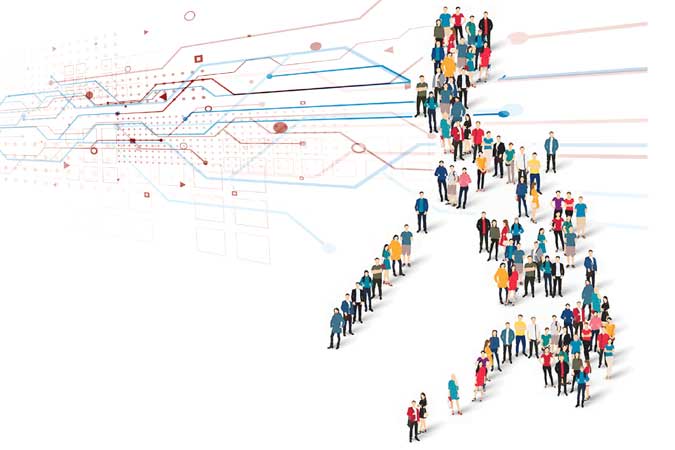The government is trying to keep Filipinos alive and healthy and, at the same time, trying to demonstrate to the world the effectiveness and efficiency of its public health administration through COVID-19 numbers. Since the early days of the pandemic, they have stuck to the narrative that, to achieve this objective, there is really no viable alternative except to keep people in their homes until the vaccine is here and enough people have it to achieve herd immunity.
On the other hand, a lockdown of the magnitude that the country was initially subjected to can only lead to the grinding halt of the economy and, eventually, its contraction. This is not to say, however, that the lockdown was not necessary nor that the resulting negative economic growth was not inevitable. How else can the economy perform without business production, household consumption, and government spending?
The extreme options seemed clear-cut. Impose a lockdown, restrict movement, and the economy will suffer. Remove the lockdown, allow unhampered travel, and many more people will get sick and die. Obviously, the way out of the predicament is to find the best mix of lockdown and economic activity — an approach that will allow the economy to function even if there is restricted movement of people — and that is through digital commerce.
The Department of Trade and Industry reported in September last year that more than 75,000 online businesses were registered from January to August. Unfortunately, this development was hailed by some government officials more for its tax-revenue potential rather than its essential role in contributing to consumer spending and the movement of goods and services. For the new entrepreneurs, this situation is their proverbial opportunity in crisis. The lockdown provided the setting for the blossoming of e-commerce in the country. While steadily getting off the ground over the years, this mode of commerce did not really hit it off with the Filipino consumer, until the lockdown and only when it became absolutely necessary.
At a recent international webinar on new technologies for 2021 hosted by the Philippine-American Academy of Science & Engineering (PAASE) in partnership with Stratbase Albert del Rosario Institute (ADRi), Karen Yang Chiang, head of Enterprise Architecture and Innovation of GCash, said that their company provided Filipinos with a seamless platform that verify transactions in real time and enabled easy flow of funds with the integration of banks and InstaPay in over 33,000 outlets and machines mixing offline QR codes in malls, online webpay, and integrated with Lazada, Apple, Google, social media sellers with over 400 billers that consumers can conveniently pay.
Chiang also cited that the “Filipino livelihood has been vastly affected by COVID-19 with a 16.9 GDP decline in (Q2) 2020, the worst in 36 years. Our unemployment rate is at 10%, which means that over five million Filipinos are left jobless; 26% of medium and small enterprises have fully closed, and 78% or 4.5 million businesses are experiencing full or partial closure. GCash is really keeping the economy moving with over 500,000 social sellers using our P2P service.”
The previous lackluster performance of the online platform can be attributed mainly to the lack of a stable and reliable internet connection. No internet means no online transaction. Moreover, an unstable internet connection could cause dropped transactions that potentially complicate the experience and turn away the customers. But that’s not all, given the upsurge in remote working and online learning, the internet and new technologies become more critical than ever.
In the same webinar, Dr. Carlos Primo “CP” David, Stratbase ADRi Trustee and Program Convenor said that new technologies are critical enablers for enhancing relationships, making daily transactions much easier and safer in this new normal. He added that online transactions will also level the playing field of small and big players.
Stratbase ADRi President Prof. Dindo Manhit, in his opening remarks, said that technology is playing an increasingly important role in the daily lives of Filipinos and that digitization can greatly shape economic recovery — but only if our digital infrastructure is ready. He proposed that the government throws its hat in the ring and use development loans to synergize digital infrastructure projects with the already massive investments of the private telcos, potentially quadrupling the resources.
By the looks of it, there is no turning back when it comes to the digital economy. We need to see clearly how to harness its immense potential in much the same way we see physical infrastructure creating multiplier effects. Digital infrastructure development, however, is not just about putting up towers — the government must also address the gaps in knowledge, regulatory framework, and access by working together with the private sector and its development partners.
The logic is really simple. There are no two ways about it — we need digital infrastructure development, and we need it now.
Edwin Santiago is a Fellow and Member of Editorial Board of the Stratbase ADR Institute.

